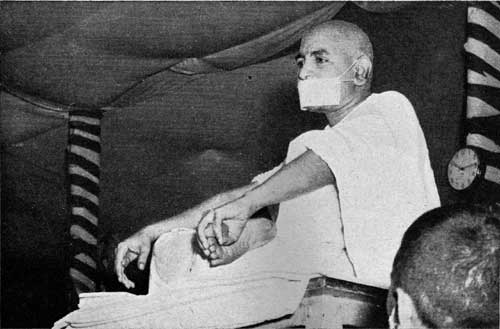
Shvetambar or Swetambar Clothing
The element of religion holds a prime part in the cultural spirit of India. Every religion in India has a distinguished facet to showcase, and Jainism is one such religion which portrays its essence through the colors of simplicity. There are different sects in Jainism; each sect is set apart from the rest through the ways of its practices, customs and the clothing they adorn. The religious sect of Svetambaras in Jainism is one of the main parts of the ritualistic crust of this religion.
Background
This sect traces its lineage existence from the period of Acharya Sthulibhadra Suri, thus rooting out their discipleship of Vrahada order in 937 AD. Svetambaras believed in the ideology which also provided opportunities to women to obtain the destination of salvation, which is referred to as Moksha. This sect followed different ways and beliefs unlike the other religious sect, which are of the Digambaras. These sects are considered to be the purest, spiritual and the closest to God.
Style and Attire
A complete white-clad costume is widely opted by the nuns and monks of Svetambaras. They even go in for a white colored cloth mouth-mask, which is also called as muhapatti. There is a generous amount of symbolism attached to this clothing tradition, especially the mouth-mask. The mouth mask is considered to facilitate the monks and the nuns in practicing the virtue of Ahimsa while expressing thoughts, ideas and opinions verbally. Through this way, even smaller creations of the world, which include tiny aerial organisms, are saved from getting breathed in by the individual.
Even through the white attire worn by them, a unique message is conveyed to the audiences, which is the Svetambaras do not support the idea of nudity which is culturally labeled as ‘sky clad or ‘atmosphere clad’ which is greatly practiced by the Digambaras. They do not believe in the materialistic luxuries of life which even include simple jewelry or other such adornments. Hence not a single chain or a bangle is seen on the body of a Svetambar nun, as they go in for a complete de-jeweled look.
These white outfits are either in a stitched form or in an unstitched form. The loin garment which goes up to the shins is generally referred to as Cholapattak. Pangarini defines another white colored cloth that is used to cover the upper portion of the body, which is also popularly known as Uttariya Vastra. This costume is also accompanied by another form of white garment that splashes across the left shoulder and masks the body up to a certain extent reaching till half of the ankle, which is a woolen shawl, and is called the Kimli. In this way, through the medium of this complete outfit, the religious sect of Svetambaras can attain the ‘heavenly gift’ of spiritual prosperity as well as the ultimate stage of life that is eternal salvation.
References
Categories: Cultural Connections, Mythological Influences
